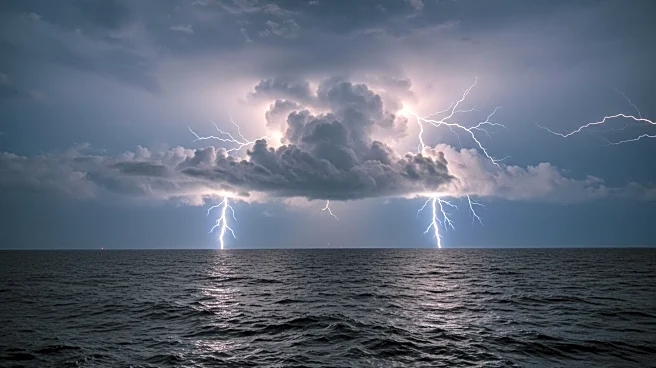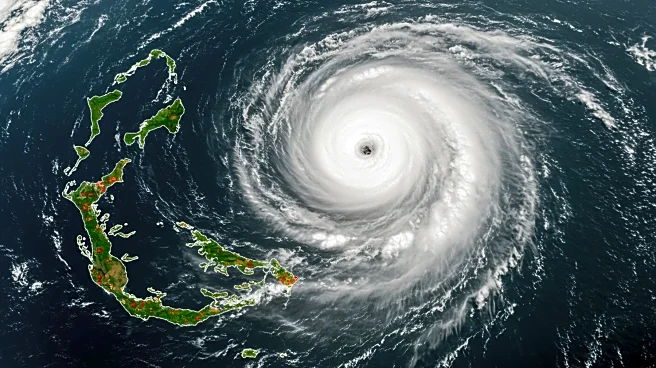What is the story about?
What's Happening?
Typhoon Kajiki is currently moving through the South China Sea, with forecasts indicating potential for flash flooding and damaging winds. The storm's path and intensity are being closely monitored, with the Joint Typhoon Warning Center providing updates. Kajiki's rainfall and wind patterns are expected to impact coastal regions, with risks of rip currents and power outages. The typhoon season in the region is active, with Kajiki being one of several storms affecting areas like the Philippines, Japan, and Taiwan.
Why It's Important?
Typhoons like Kajiki can cause significant damage to infrastructure, disrupt communities, and lead to loss of life. The storm's impact on U.S. territories, such as Guam, highlights the broader implications for American interests in the region. Understanding and tracking these storms are crucial for disaster preparedness and response efforts. The data collected from Kajiki and similar storms contribute to improving forecasting models and enhancing resilience against future typhoons.
What's Next?
Authorities in affected regions will continue to monitor Kajiki's progress and issue warnings as necessary. Evacuation plans and emergency services may be activated to mitigate the storm's impact. Long-term, there may be increased investment in infrastructure to withstand typhoon-related damage and efforts to improve early warning systems. International cooperation in sharing data and resources could enhance the ability to respond to such natural disasters effectively.
AI Generated Content
Do you find this article useful?














